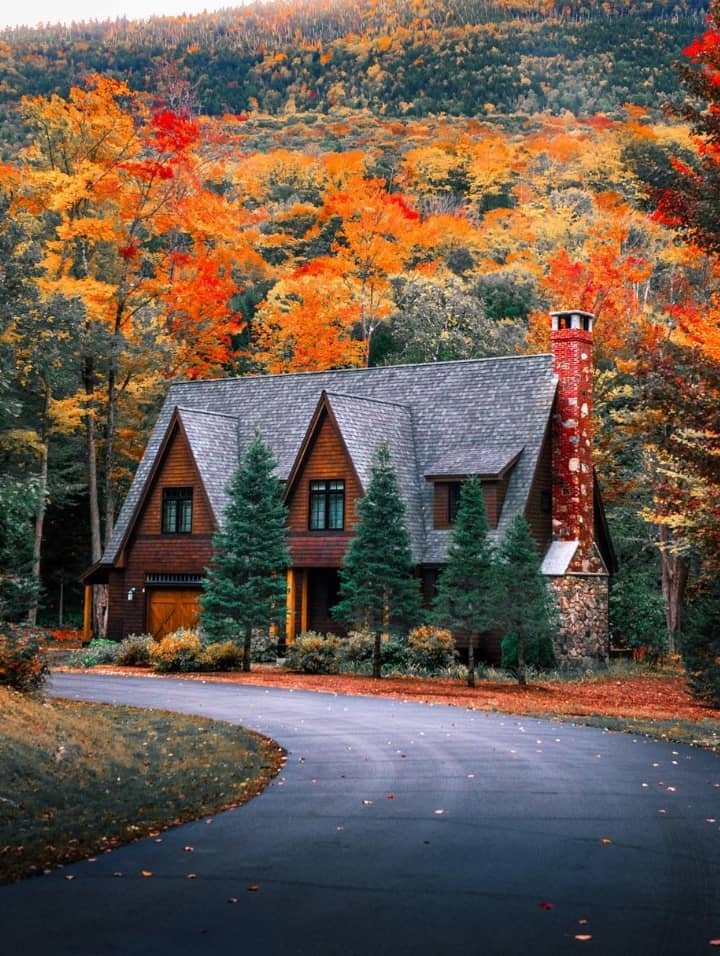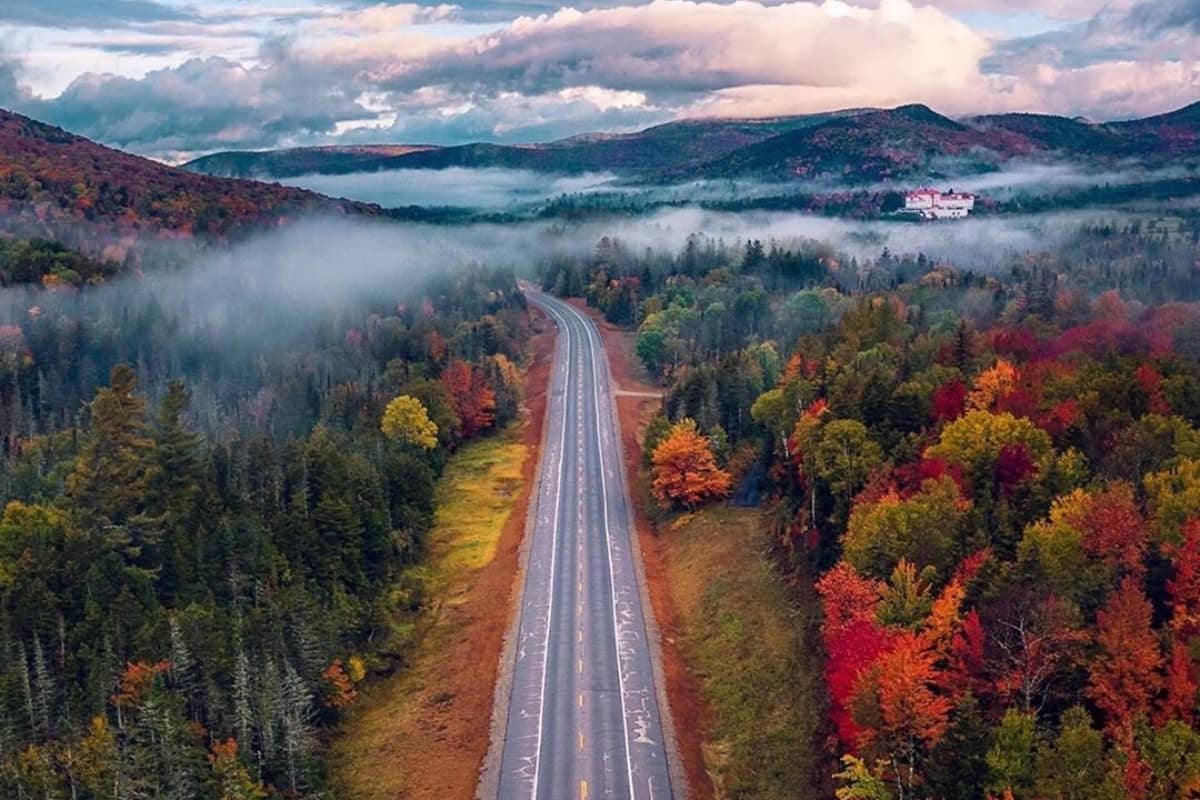New Hampshire’s White Mountains offer some of the most breathtaking scenery and outdoor adventures one can imagine. My journey through this region has been a blend of awe-inspiring landscapes, charming local culture, and some harsh realities of living in such an environment. This article captures my experiences, weaving in stories from others who have shared similar paths, and provides a comprehensive look at what makes the White Mountains both magical and challenging.
The Enchanting White Mountains
My first encounter with the White Mountains was along the renowned Kancamagus Highway, often referred to as “The Kanc.” This 34-mile scenic byway is a must-visit for anyone exploring New England, especially during the fall. The drive is adorned with vibrant foliage that transforms the landscape into a mosaic of red, orange, and yellow hues. Each turn offers a new vantage point, revealing stunning vistas, serene hiking trails, and cascading waterfalls.
One of the most memorable stops along The Kanc was at Sabbaday Falls. The short hike to the falls is rewarded with a view of water tumbling over rocks into a crystal-clear pool. It’s a popular spot, and for good reason. The sound of the water, the cool mist in the air, and the surrounding forest create a serene atmosphere that feels almost otherworldly.
Seasonal Splendor and Struggles

While the fall is undoubtedly the most celebrated season in the White Mountains, each season brings its own charm and challenges. Winter, for instance, blankets the region in snow, transforming it into a winter sports paradise. Skiing, snowboarding, and snowshoeing are popular activities that draw visitors from all over. However, living through the winter here is not for the faint-hearted.
Heating an old colonial house during the long, harsh winters can be incredibly expensive. Many homes rely on oil heating, and keeping a large, drafty house warm can strain any budget. I recall a conversation with friends who moved from California to New Hampshire, drawn by the dream of living in a beautiful colonial home. After two winters, they returned to California, never speaking of their New Hampshire experience again. The relentless cold, high heating costs, and the seemingly endless snow proved too much for them.
Spring in the White Mountains is a time of renewal, but it’s also known as “mud season.” The melting snow and frequent rains turn trails and unpaved roads into muddy quagmires. Despite this, the sight of blooming wildflowers and the gradual greening of the landscape make it a beautiful time to visit, albeit with the right footwear.
Summer and the Mosquito Menace
Summer in the White Mountains brings warmth and an explosion of greenery. It’s the perfect time for hiking, swimming, and exploring the numerous trails and natural attractions. However, the heat can be intense, especially in homes without air conditioning. Many older houses in New Hampshire lack central AC, making window units a necessity. These units, while providing some relief, often let in mosquitoes, which are notoriously large and aggressive in this region.
One summer, I found myself sweltering in the upper floor of an old house, the fan in the window doing little to combat the heat. The incessant buzz of mosquitoes, which seemed as large as small birds, was a constant annoyance. The only relief came from the cool mountain streams and rivers where I could take a refreshing dip. Swimming in the rivers and sliding down natural rock formations were some of the highlights of my summer in New Hampshire.
Fall: A Photographer’s Dream

Fall in New Hampshire is nothing short of spectacular. The foliage draws photographers, artists, and tourists from all over the world. The Kancamagus Highway, in particular, becomes a vibrant corridor of color. I remember one particularly vivid autumn day, driving through the White Mountains with my camera in hand. The colors were so intense that they almost seemed unreal. The reds, oranges, and yellows of the leaves contrasted sharply with the clear blue sky, creating a scene that looked like it was straight out of a painting.
The White Mountains are also home to the Mount Washington Hotel, a historic and picturesque site that offers a glimpse into the region’s past. Visiting this grand hotel during the fall, with its stunning backdrop of vibrant foliage, was like stepping back in time. The hotel’s architecture and the surrounding scenery made it a perfect subject for my photography.
The Community and Culture
Living in the White Mountains isn’t just about surviving the elements; it’s also about being part of a close-knit community. The people here are resilient, and their love for the region is palpable. They embrace the challenges and find joy in the simple pleasures that the mountains offer. I found a deep sense of camaraderie among the locals, whether it was sharing tips on the best hiking trails, commiserating over the harsh winters, or celebrating the arrival of spring.
One of the unique aspects of the White Mountains is the presence of traditional New England charm in its towns and villages. Places like North Conway, Lincoln, and Littleton offer quaint shops, cozy cafes, and friendly locals. These towns are often bustling with tourists during peak seasons, but they retain a sense of authenticity and warmth that makes them special.
Adventures and Misadventures
Exploring the White Mountains is always an adventure. From the exhilarating hikes to the unexpected wildlife encounters, there’s never a dull moment. I recall one hike up Cannon Mountain where I took the tram to the summit. The 360-degree views of the surrounding peaks were breathtaking, and the crisp mountain air was invigorating. On another occasion, I hiked the trails around Franconia Notch, discovering hidden waterfalls and serene forest glades along the way.
Not all adventures go as planned, though. During one winter, I decided to take a nighttime drive through the Kancamagus Highway after a heavy snowfall. The road was deserted, my car skidding on the icy surface, and my phone had no reception. It was a nerve-wracking experience, but also a testament to the raw and untamed beauty of the region.
Tips for Visitors
If you plan to visit the White Mountains, there are a few things to keep in mind. First, timing your visit can greatly enhance your experience. Fall is the most popular time, but it’s also the busiest. Visiting during the week can help you avoid the crowds. Winter offers its own unique beauty and activities, but be prepared for the cold and potentially hazardous driving conditions.
For those looking to explore the region, renting a car is essential. Many of the best spots, like The Kanc, Franconia Notch, and the Mount Washington Hotel, are best accessed by car. Hiking trails are abundant, so bring good walking shoes and be ready for varying trail conditions.
Lastly, don’t forget to respect the local environment and communities. The White Mountains are a precious natural resource, and preserving their beauty for future generations is everyone’s responsibility.
Conclusion
The White Mountains of New Hampshire are a place of stunning natural beauty, rich history, and vibrant community spirit. My journey through this region has been a mix of breathtaking landscapes, seasonal challenges, and unforgettable experiences. Whether you’re drawn by the fall foliage, the winter sports, or the simple joy of exploring the great outdoors, the White Mountains offer something for everyone. Despite the hardships, the magic of this place makes it a truly special corner of the world.






